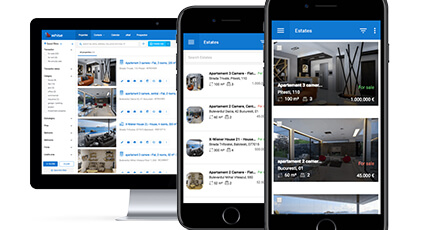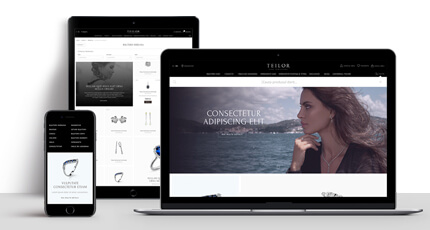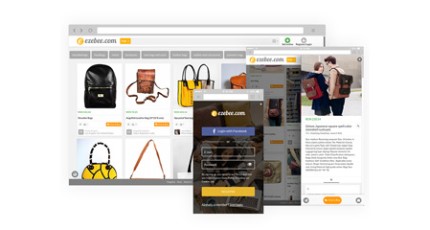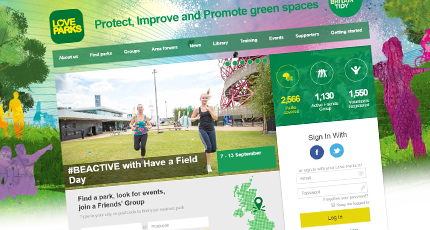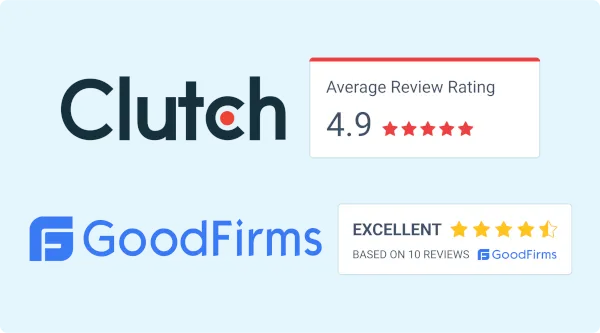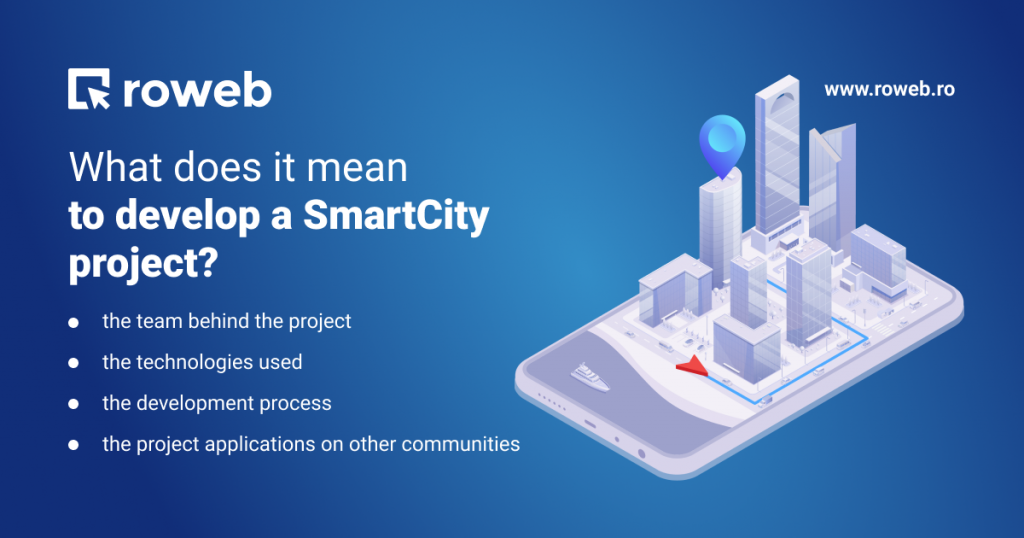
How digitized are the services in your city?
But in the company you manage / work for?
How much does / could (for real) help having access to a smart solution that brings to the same common denominator the need for transparency, communication and efficiency of the processes of an entity (town hall, hospital, school, company, etc. ) with the rapid response of a community?
Digitization brings more than a democratization of communication in the different types of communities in which we live, work, socialize. Provides, first of all, access to the most important resource: time.
This is the premise from which we started when we developed (about 2 years ago) SmartCity by Roweb. Now the product is a mature one, all the modules and functionalities that it integrates already having a high stability. In addition, it is a solution implemented and used constantly in the market (for example, it is already the basic digital solution of Pitesti City Hall).
Trends in smart approaches in different types of communities
The trend of adopting “smart” technologies and solutions has accelerated in the last two years, the pandemic context being certainly among the strongest triggers.
SmartCity has already begun to mean more than optimized street lighting, applications connected to public transport or mapping alerts in the city. It is a concept that brings together, in fact, several “smart” approaches, all with some common goals:
- simplifying communication between different categories of users;
- much faster solution of requests and problems;
- increasing the comfort of members of a community through quick access to services and reducing the time for routine activities;
- greater efficiency for service providers.
Interestingly, this concept can be adapted to… any type of community included in a city: from hospitals, schools and OPCs, to neighborhoods, large residential areas, NGOs, news hubs and even companies. (Because, yes, the business area has also become an integral part of a city’s life, the digitalized work environment implying, especially in the pandemic period, a migration into personal space.)
It is not surprising, therefore, that smart edging in communities (implemented mainly through digital solutions) it has become a “must have” for all cities. And the authorities in the developed urban areas have fully understood this, the investments in the field proving this openness.
Investments in Smart Cities solutions globally – 2022

Why did we develop SmartCity and who are we actually targeting with this solution?
About 2 years ago, most services seemed to be blocked for a difficult time to define. Lockdown made it difficult, if not impossible, to continue important activities, and the idea of digitization suddenly became indispensable.
This is the context in which the SmartCity solution appeared. Matching the digitization needs we had observed and analyzed before the pandemic, with the emergencies that arose during it, we created the first structures of modules, applications and functionalities. Continuous testing of the digital product has led to its maturation, so today we can talk about a stable solution that works without crashes and errors.
SmartCity – is a solution that can be customized and reused. For now, it has a direct beneficiary, Pitesti City Hall, but it can also be sold to companies, organizations or other types of institutions.
Therefore, it was not designed exclusively for a single type of community, but, on the contrary, was developed, rather, as a flexible prototype, perfectly capable of being scaled and quickly adapted for a variety of types of communities.
A concrete example of a way in which Smart City can be used is as a notification company for a networking company. It can be used by companies, especially to obtain internal and external feedback.
But this is just one example. In a dedicated chapter of this article, I will list several types of declinations that can be made for this solution. And, please, keep in mind that the list is only for inspiration, because, in practice, this ability to adapt is unlimited, in fact. Literally!
As a way of working for the implementation of the solution, I will also follow an example: Pitesti City Hall.
- The client told us about the digitization needs he wants to solve with priority;
- We made a matching between the functionalities included in the solution + those that can be developed specifically with its digitization needs;
- I came to the client with the presentation of the solution structure;
- Once the contract was signed, the client provided us with all the data for configurations;
- We have also integrated a page of institutions that contains their contact details and is dedicated to citizens so that they can find in one place the information they need: contact details, address map, etc.
- In a very short time we adapted the solution and it could be used both by the employees of the institution and by the citizens.
SmartCity (the solution developed by us, which can be adapted for any type of community / city) integrates 3 platforms:
- MOBILE APP – iOS & Android application created for citizens to give them quick access to information / announcements / events and the possibility to send notifications directly from your mobile phone.
- ONLINE PORTAL – Extending the services offered by the local administration through a web communication portal – optimized for mobile and search engines (for example: Google).
- BACKOFFICE WEB – Intuitive digital platform, created for employees in the local administration system for receiving and managing complaints from citizens.
The advantages of the SmartCity solution:
- It can be delivered / implemented quickly at an optimal cost;
- Brings added value to customers;
- Allows better organization;
- It is people-oriented;
- It allows better communication and creates a bridge between the developer and its customers;
- Allows the extension of functionalities. An example of a function that could be added is the suggestions part (so that those who use the application can come up with a series of suggestions);
- It can also have an ad module (OLX type), which addresses the community that revolves around the application;
- It benefits from maintenance;
- It can be declined for other industries / fields.
How the solution can be declined for other types of communities
Because one of the advantages of the SmartCity solution is the fact that it can be easily declined for almost any type of industry, community, field, here are some examples:
- SmartOPC (Complaints can be submitted by the mobile application not only through the classic channels: telephone call, written notification, e-mail. The management of the notifications can be centralized from a single place in the back office.);
- SmartCovCity (Can be included in the digitization of state institutions – Health 2021-2027. It can be thought of as an application for personal monitoring with Covid-19.);
- SafeCity (Police complaints, possibly local police);
- SmartSchool (For schools, high schools, kindergartens and universities);
See more examples of declensions of the SmartCity application and what features they can integrate in the article: SmartCity development | How the SmartCity application can be declined for other types of communities
The team behind the project and the development process
Quick implementations. Few bugs. Development of applications as complex as they are functional. These things are possible in Roweb through the mobile team. 8 developers (some of them with over six years of experience) specialized in developments on:
- iOS
- Android
- React Native
and coordinated in the last 2 years by the Mobile Team Manager – Malina Mircu.
I asked Malina why the Mobile team is exactly what an external client needs.
“I coordonate, first of all, a team of professionals. We have people in the team with over six years of experience. Developers are dedicated to the client’s project, regardless of its complexity. In addition, they can be involved in the development of projects in all fields. And this can be seen in the company’s portfolio. ”
Mobile team workflow:
- Technical consulting for the client
- Establishing wireframes
- Design
- Defining the database structure
- Creating application
- Design API design
- Development
- Implementation
- Testing (Testing is done manually and automatically, depending on the specifics of the project.)
First and foremost, the value of the Mobile team is the common passion for programming and technology. And, as an extra argument, here are some insights from the team.
Gabi – IOS Developer
Q: Why the Mobile Team?
A: I have been in the team for almost 7 years. I think that what attracted me then was the fact that the projects were made on a relatively new technology, in development. It was something different from what most programmers did in 2015.
Q: What do you like the most about your team / company?
A: The atmosphere in the team and in the company, a friendly environment where the people are open to new things and where you are helped to grow from both professionally and personally perspective.
Q: What are the usual challenges in mobile projects?
A: Finding a common denominator in search of optimal solutions to deliver the best products in the optimal time.
Q: What about the satisfactions?
A: The moments when, after bugs that keep the team in place for several hours, we find the solution.
Ionel – Android
Q: Why is the Mobile Team?
A: I am passionate about Android and mobile devices and I am attracted to everything related to development in this direction. I see a lot of potential in the projects I work on and that gives me extra motivation.
Q: What do you like most about the team / company?
A: I like the fact that we work as a team, each of which can come up with different ideas and approaches in product development or solving different problems.
Q: What are the usual challenges in mobile projects?
A: Solving problems under time pressure, especially in production applications, on the one hand. On the other hand, the major challenges are related to software / hardware fragmentation in the Android ecosystem and keeping up with the new trends in Andoid application development.
Q: What about the satisfactions?
A: The satisfaction of doing something great and useful.
Adrian – React Native Developer
Q: Why the Mobile Team?
A: I chose the mobile team because I like this direction. In addition, I like the team environment and the fact that I can consult with other colleagues about the best practices used, so that the results are as good as possible.
Q: What do you like the most about the team / company?
A: I like that I have constant feedback and I am involved in technical meetings that help me have good control over how the implementation should be approached .
Q: What are the usual challenges in mobile projects?
A: The challenges are dynamic and do not resemble each other from one project to another. For example, at the moment, the main challenge is the test management mode (depending on the operating system, but also on the application).
Q: What about the satisfactions?
A: I am constantly learning and feeling how I evolve from one project stage to another. I think this learning is an essential thing in programming.
Bogdan – React Native Developer
Q: Why the Mobile Team?
A: I have always liked the mobile development area and I feel that I am the right person in the right place in this team and in the projects I develop.
Q: What do you like the most about the team / company?
A: From the atmosphere, to the way of working and the technologies used, I can say that I like everything.
Q: What are the usual challenges in mobile projects?
A: There are both imposed by the projects and personal challenges, usually related to the fact that we must deliver the code as clean and well developed as possible.
Q: What about the satisfactions?
A: With each project I am glad to have the opportunity to transform or create a product and, soon enough, to see that it is successful.
Cosmin – IOS Developer
Q: Why the Mobile Team?
A: In the Mobile team I have the opportunity to actually do what I like – that is to work in the Apple ecosystem and with the Swift language.
Q: What do you like the most about the team / company?
A: I feel that here I always have the opportunity to learn new things and to develop challenging apps.
Q: What are the usual challenges in mobile projects?
A: Challenges occur in every application. From these we have the chance to learn various things.
Q: What about the satisfactions?
A: Most satisfactions appear at the end of development. After completing a successful application, I fully experience the sense of accomplishment.
Other projects in the Roweb portfolio developed by the Mobile
Tourpaq Guest App
During the collaboration with us, Tourpaq decided to build an application entirely dedicated to end users. It provides visitors with real-time information – details, booking updates and ideas to inspire tourists to fully enjoy the holiday.
TECHNOLOGIES: Native React, Firebase Realtime Database, Firebase Push Notifications, Dibs by Nets, Redux

Tourpaq Destination App
Tourpaq Destination App is a solution for guides and tourists alike, which helps them book and manage various trips.
TECHNOLOGIES: iOS, Objective C, Firebase, .NET, SQL

Mobile application | CIM Bank
Development of a mobile application to help CIM Bank expand its services to the mobile market through intuitive and secure trading tools.
TECHNOLOGIES: Swift, Java / Android, ASP .NET Web API

WHISE CRM PROJECT – for real estate
Ongoing project with a focus on developing a flexible and modern working environment for real estate, which can be adapted for several countries / markets.
TECHNOLOGIES: .NET 5 Web API, Nancy FX, MSSQL, Elasticsearch, Memory cache, Redis, RabbitMQ, SignalR, Quartz.NET, Azure DevOps, Docker, Kubernetes, ReactJS

Modular solution for waste management – SmartSanitation
Developing from scratch a modular solution that integrates specific functionalities of waste management (mobility + billing system based on the concept “pay as you produce” + multi-user applications + real-time data synchronization)
TECHNOLOGIES: C #, Asp.Net 5, EntityFramework Core, PostgreSQL, Docker & Docker compose, Consul, RabbitMq, MediatR, Steeltoe, Polly, Hangfire, IronPdf, SendGrid, MailKit, MassTransit, Ocelot, OpenAPI, JWT, Linux, Angular, Typescript, Nginx, WSL2

Car insurance payment solution RCA payment
Complete solution (online portal + mobile application) for insurance (car and not only) created to simplify the processes of selection of offers and effective purchase of policies.
TECHNOLOGIES: PHP, MySQL, jQuery, Web Service, Android, iOS, SQLite, XML, GreenDAO ORM, Alarm Manager, Local Notifications

Why work with our teams to develop digital solutions?
- Our experience. There are over 130 professionals in the Roweb team, and of these over 50% are seniors. This means that they have the knowledge to help you turn your idea into a project that keeps pace with changes in the current context.
- We develop end-to-end applications and offer the client all the services they need in the digital transformation process: from business analysis and consulting to post-implementation testing and maintenance.
- The technologies we use to develop our projects are modern and innovative.
Each software development project has a dedicated team. Therefore, the attention is channeled towards the development of a project that corresponds to the client’s needs and the current conditions of the company, but which exceeds the users’ expectations in order to keep you engaged in the use process.

